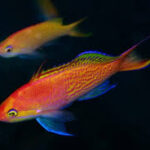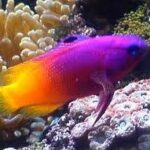The Evolution of Dragons in International Fantasy Works

Dragons have long been one of the most iconic and enduring creatures in mythology and storytelling, their rich legacy stretching across cultures and eras. From their terrifying and majestic presence in ancient legends to their transformation into beloved characters in modern fantasy, dragons have continuously evolved. This transformation, particularly in the realm of international fantasy literature and media, reflects both the cultural changes of societies and the broader shifts in storytelling trends.
From fire-breathing, villainous monsters to wise, noble creatures or even quirky companions, dragons have transcended their original roles to become multifaceted symbols in fantasy works across the globe. The evolution of dragons in fantasy literature—whether in books, films, television, or video games—reveals the complex and nuanced nature of these mythical beings. In this article, we explore how the portrayal of dragons has evolved through various international works, focusing on their changing roles and significance across cultures.
The Early Origins: Dragons in Ancient Mythology
Before delving into modern fantasy, it is essential to understand the deep historical roots of dragons. Dragons, as mythological creatures, can be traced back thousands of years to various ancient civilizations. The earliest dragon depictions are often found in Chinese, European, and Middle Eastern myths, where dragons were both feared and revered.
In Chinese mythology, the dragon is a symbol of strength, power, and good fortune. The Chinese dragon is often depicted as a benevolent creature, closely associated with the emperor and the forces of nature. In contrast, in European mythology, particularly in the medieval period, dragons were frequently seen as evil, dangerous creatures to be slain by knights. The story of Saint George and the Dragon is a prime example of this archetype.
For centuries, dragons served as symbols of the unknown—creatures that represented chaos, mystery, and the forces of nature beyond human control. They were portrayed as fire-breathing beasts or serpentine monsters capable of wreaking destruction on civilizations. These ancient depictions of dragons laid the foundation for their role in later fantasy works.
Dragons in Early Western Fantasy: Villains and Challenges
In the early Western fantasy literature, dragons were often portrayed as monstrous antagonists, forces of evil that characters had to conquer. This portrayal was largely influenced by the religious and mythological traditions of medieval Europe, where dragons were viewed as embodiments of evil.
One of the earliest and most influential works to feature a dragon was Beowulf, the Old English epic poem written between the 8th and 11th centuries. In this poem, the hero Beowulf faces a dragon in the latter part of his life. The dragon is depicted as a guardian of treasure, guarding a hoard of gold that represents greed and corruption. The dragon in Beowulf is a menacing creature, and its defeat by Beowulf marks the hero’s final, tragic battle.
This archetype of the dragon as a fearsome adversary continued into the 19th and 20th centuries, where dragons often appeared in the works of fantasy writers like J.R.R. Tolkien and C.S. Lewis. Tolkien’s The Hobbit (1937) introduced the dragon Smaug, a clever and dangerous creature who hoards treasure in the Lonely Mountain. Smaug’s portrayal as a greedy, self-centered beast became a defining feature of dragons in early fantasy works, reflecting themes of avarice and corruption.
C.S. Lewis’ The Chronicles of Narnia (1950-1956) also introduced dragons into the world of children’s fantasy. In The Voyage of the Dawn Treader, the character Eustace Scrubb is transformed into a dragon as part of his personal journey. This metamorphosis and subsequent redemption arc shows how dragons were often used as symbols of inner conflict and moral challenges.
The Rise of Noble Dragons: Shift Towards Wisdom and Power
By the late 20th century, the portrayal of dragons in fantasy works began to evolve. They were no longer solely villains to be vanquished by heroes, but also figures of wisdom, strength, and majesty. This shift mirrored broader cultural changes, such as the growing appreciation for non-Western mythology and the rising popularity of more nuanced storytelling.
One of the key works that contributed to the evolving image of dragons was Anne McCaffrey’s Dragonriders of Pern series, first published in 1968. McCaffrey redefined the dragon as a noble and intelligent creature that forms a symbiotic bond with humans. The dragons in her series are highly telepathic, capable of communicating with their riders, and work together to defend their world from external threats. McCaffrey’s dragons are not just fire-breathing monsters; they are protectors, friends, and equals to their human counterparts. This concept of dragons as more than just mindless beasts paved the way for a more complex and dynamic representation of these creatures in future works.
Another pivotal moment in the evolution of dragons came with the release of The Dragonriders of Pern and the subsequent rise of dragons in fantasy works like The Inheritance Cycle by Christopher Paolini. In Eragon (2002), the dragon Saphira is a wise, powerful, and loyal companion to the protagonist, Eragon. Saphira embodies many of the traits that became central to modern dragons—intelligence, loyalty, and strength.
This portrayal of dragons as intelligent and noble beings, as opposed to merely destructive monsters, reflects a deeper understanding of the creature’s symbolic role. Dragons in these works come to represent untapped potential, inner wisdom, and the power of cooperation between species.
Dragons as Complex Characters: Exploring Duality and Morality
As fantasy literature continued to mature in the 21st century, dragons became even more complex. They were no longer confined to a singular role—either as villains or noble allies. In modern works, dragons often embody a dual nature, serving both as protectors and destroyers, wise mentors and misunderstood creatures.
One prominent example of this evolution is George R.R. Martin’s A Song of Ice and Fire series, particularly the Game of Thrones television adaptation. Martin’s dragons—specifically Daenerys Targaryen’s three dragons—play a crucial role in the plot and are much more than mere tools of war. They symbolize Daenerys’ power, but also her connection to her heritage and her struggle with the responsibility of ruling. The dragons are not mindless beasts; they have personalities, emotions, and are treated as integral members of Daenerys’ inner circle. Their presence highlights the themes of power, legacy, and morality that are central to the story.
In other fantasy works, such as The Temeraire series by Naomi Novik, dragons are not only companions to humans but also central to the geopolitical struggles of their world. In His Majesty’s Dragon (2006), dragons serve as highly intelligent creatures with distinct personalities and complex motivations. The relationship between humans and dragons is not just about loyalty and alliance; it also explores themes of duty, honor, and the complicated politics of war.
This portrayal of dragons as multifaceted characters reflects the broader trend in modern fantasy literature: characters—whether human or dragon—are no longer bound to traditional tropes. They are complex, morally ambiguous, and capable of growth and change. Dragons, once simple representations of chaos or power, now serve as symbols of transformation, challenge, and personal evolution.
Dragons in Global Fantasy Media: Film, Television, and Video Games
While dragons have a rich literary history, they have also made significant strides in the realm of film, television, and video games. These modern media have allowed for new and exciting interpretations of the dragon mythos, from high-budget fantasy epics to innovative video game mechanics.
In film, one of the most iconic portrayals of dragons is in How to Train Your Dragon (2010), an animated film that revolutionized the way dragons are seen in mainstream cinema. In the film, the dragon Toothless becomes a companion to the protagonist, Hiccup, and together they explore themes of friendship, understanding, and breaking down stereotypes. Toothless, with his unique blend of power and playfulness, challenges traditional notions of dragons as fearsome, destructive creatures.
In the world of video games, dragons remain central figures in many fantasy franchises. In The Elder Scrolls V: Skyrim, players interact with dragons in a deeply immersive open-world environment. The dragons in Skyrim are not only powerful enemies but also integral to the game’s storyline, serving as both obstacles and sources of great power. The relationship between the player and the dragons in Skyrim is both combative and cooperative, allowing for a complex interaction between player and beast.
Conclusion: The Future of Dragons in Fantasy
The evolution of dragons in fantasy literature and media mirrors the broader evolution of storytelling. From their early depictions as terrifying beasts to their modern representations as noble allies and complex characters, dragons have come to embody many of the same qualities that make fantasy so compelling: transformation, conflict, and the exploration of the unknown.
As technology advances and new forms of media emerge, dragons will continue to evolve. Whether in books, films, television shows, or video games, dragons will remain a powerful and multifaceted symbol in the realm of fantasy, a reflection of our ongoing fascination with these mythical creatures and the lessons they impart about power, wisdom, and the balance of forces in the world.
The journey of the dragon—once a fearsome foe, now a noble friend, and sometimes even a mentor—will undoubtedly continue to inspire new generations of creators and audiences, ensuring that this legendary creature remains an enduring and dynamic figure in international fantasy works for years to come.

